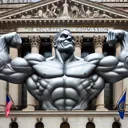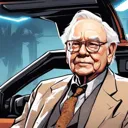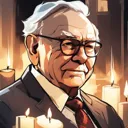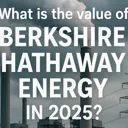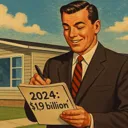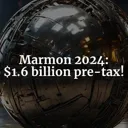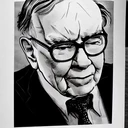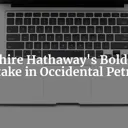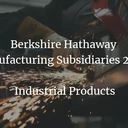Tags: History / Duracell
This fanpage is not officially affiliated with Berkshire Hathaway: Disclaimer
Who would have thought that investing in a razor company could lead to owning a battery giant? Join us on a remarkable journey through the history of American corporate success: the journey of Berkshire Hathaway, where Warren Buffett's $600 million gamble on Gillette transformed into a strategic acquisition of Duracell.

Introduction
The journey from Gillette to Duracell is a testament to Warren Buffett's exceptional strategic foresight and investment philosophy, which has consistently guided Berkshire Hathaway to remarkable success. This narrative begins with a bold move in 1989 when Buffett's Berkshire Hathaway invested a substantial $600 million in Gillette's preferred stock ↗. This decision not only underscored Buffett's confidence in Gillette's market potential but also set the stage for a series of strategic maneuvers that would eventually lead to the acquisition of Duracell, a powerhouse in the battery industry.
Buffett's approach to investing is characterized by a keen understanding of market dynamics and a commitment to long-term value creation. The approximate $100 million pre-tax annual earnings of Duracell today serve as a testament to the enduring value of Buffett's strategic decisions. For shareholders of Berkshire Hathaway, this story is more than just a historical account; it offers profound insights into the art of strategic investment and the ability to foresee and capitalize on market trends.
This article will delve into the historical context, strategic decisions, market trends, and economic implications of this fascinating business saga. It promises an entertaining and informative exploration of how Buffett's investment acumen transformed an initial gamble on razors into a lucrative stake in the battery industry. As we embark on this journey, we will uncover the layers of strategy and foresight that have defined Buffett's investment career and continue to shape the future of Berkshire Hathaway.
The Gillette Gamble
The story of Berkshire Hathaway's involvement with Gillette begins in 1989 when Warren Buffett made a calculated decision to invest $600 million in Gillette's preferred stock 1 ↗. This investment was not just a financial transaction; it was a strategic move that reflected Buffett's confidence in Gillette's market dominance and growth potential. The preferred stock came with an 8.75% dividend and a conversion option, allowing Buffett to convert these shares into common stock at $50 each 1. This decision was grounded in Buffett's belief in Gillette's ability to maintain its market leadership, commanding a 60% share of the global market 1.
In 1990, Gillette redeemed Buffett's preferred stock, converting it into 12 million common shares and granting Berkshire an 11% stake in the company 1. This conversion was a pivotal moment, as it solidified Berkshire's position as a significant shareholder in Gillette. Buffett's admiration for Gillette was evident in his acknowledgment of its market dominance and potential for growth. He famously stated, "Coca-Cola and Gillette are two of the best companies in the world, and we expect their earnings to grow at hefty rates in the years ahead" 1.
However, Buffett also reflected on the missed opportunity of choosing preferred stock over common stock, which could have made Berkshire $555 million wealthier 1. This realization highlights the complexity of investment decisions and the importance of foresight. Below is a comparison of the potential gains from preferred versus common stock:
| Investment Type | Potential Gains |
|---|---|
| Preferred Stock | $600 million |
| Common Stock | $1.155 billion |
Despite this hindsight, Buffett's confidence in Gillette remained unwavering. He introduced the concept of "The Inevitables," referring to companies like Gillette that were expected to dominate their fields for an investment lifetime 1. This belief in Gillette's long-term dominance was a cornerstone of Buffett's investment strategy and laid the groundwork for future strategic moves, including the eventual acquisition of Duracell.
The P&G Transformation
The merger of Gillette into Procter & Gamble (P&G) in 2005 marked a pivotal moment in the investment journey of Warren Buffett and his conglomerate, Berkshire Hathaway. This strategic move resulted in Berkshire acquiring a substantial stake in P&G, a testament to Buffett's knack for identifying and capitalizing on lucrative opportunities. By the end of 2005, this stake was valued at a staggering $5.8 billion, a significant leap from the initial investment in Gillette 1.
Buffett's investment in Gillette, which began with a $600 million purchase of preferred stock in 1989, evolved into a formidable stake in P&G. This transformation underscores the strategic importance of P&G's focus on streamlining its brand portfolio, a move that reshaped Berkshire's investment landscape. P&G's decision to concentrate on about 80 profitable brands, as articulated by CEO A.G. Lafley, was a clear signal of its intent to optimize and enhance its core business operations 2.
In anticipation of the Duracell acquisition, P&G injected $1.8 billion into the battery unit, a strategic maneuver that ensured the brand was well-capitalized before the transition to Berkshire's ownership. This injection was part of a broader strategy that saw Berkshire swap $4.7 billion in P&G shares for Duracell, a move designed to sidestep capital-gains tax and maximize shareholder value 2.
The financial and strategic motivations behind this swap are emblematic of Buffett's strategic foresight. By navigating the complexities of corporate mergers and acquisitions, Buffett demonstrated an ability to extract maximum value from his investments. This transformation involved several key financial figures and transactions:
- $600 million initial investment in Gillette preferred stock.
- $5.8 billion valuation of Berkshire's P&G stake by the end of 2005.
- $1.8 billion cash injection by P&G into Duracell.
- $4.7 billion worth of P&G shares exchanged for Duracell.
Buffett's ability to foresee and capitalize on the evolving corporate landscape has consistently maximized shareholder value, reinforcing his reputation as a master strategist in the world of investments.
The Duracell Acquisition
The acquisition of Duracell by Berkshire Hathaway in 2016 was a strategic masterstroke, with an effective purchase price of $2.9 billion after accounting for P&G's cash injection. This move was not just a testament to Buffett's investment acumen but also a reflection of his deep understanding of Duracell's potential 2.
Duracell's journey to Berkshire's portfolio is steeped in historical significance. Initially acquired by Gillette in the late 1990s, Duracell became part of P&G through the 2005 merger. This transition to Berkshire marked the culmination of a strategic vision that began when Buffett was on Gillette's board during Duracell's acquisition 5.
The strategic benefits of acquiring Duracell were manifold ↗. By opting for a stock swap rather than a cash purchase, Berkshire effectively avoided a hefty capital-gains tax, showcasing Buffett's financial savvy. Additionally, Buffett's familiarity with the brand, stemming from his tenure on Gillette's board, provided him with unique insights into Duracell's potential for growth and profitability 1.
Despite Duracell's strong market position, holding over one-fourth of the global battery market, it faced significant challenges. The rise of rechargeable devices had dampened demand for traditional batteries, necessitating substantial investment to revitalize the brand 2. However, Buffett's confidence in Duracell's potential was unwavering. He believed that with the right investment and strategic direction, Duracell could achieve substantial earnings growth and long-term profitability.
In the face of market challenges, Buffett's assertion that "Duracell should be earning more money than it is now, and will be" reflects his confidence in the brand's capacity to rebound and thrive 1. This acquisition not only reinforced Berkshire's subsidiaries but also highlighted Buffett's unparalleled ability to turn market dynamics to his advantage, securing a prosperous future for shareholders.
Market Dynamics and Strategic Insights
The battery industry is undergoing a significant transformation, driven by the rise of rechargeable devices and the expanding market for consumer electronics. As devices like smartphones and tablets become ubiquitous, the demand for traditional alkaline batteries has been challenged. However, this shift also presents opportunities for companies like Duracell, which has positioned itself as a leader in the alkaline battery segment. With a market share of over one-fourth globally, Duracell remains a formidable player in the industry 7.
The competitive landscape is populated by key players such as Energizer Holdings Inc. and Panasonic Holdings Corp., with Duracell maintaining a strong presence. The company’s ability to navigate the challenges posed by rising raw material costs, such as zinc and electrolytic manganese dioxide (EMD), is crucial. These materials are essential for battery production, and their increasing prices could impact market growth. Duracell's strategic focus on recyclable batteries and operational efficiency helps mitigate these challenges 7.
Mergers and acquisitions are pivotal in shaping the alkaline battery market. The acquisition of Duracell by Berkshire Hathaway is a prime example of how strategic moves can redefine market dynamics. Such transactions not only enhance market presence but also foster innovation and adaptability, which are vital for long-term success. The market is also witnessing a growing demand for recyclable batteries and significant contributions from regions like North America, which is expected to account for 37% of global market growth 7.
Key market growth factors include:
- Growing demand for alkaline batteries replacing zinc carbon batteries.
- Development of recyclable alkaline batteries.
- Increasing mergers and acquisitions in the primary battery market.
- Regional market contributions, with North America playing a significant role 7.
Berkshire's acquisition of Duracell underscores the importance of adaptability and innovation in navigating market shifts. Historically, companies like Duracell have responded to significant market changes by investing in technology and expanding their product lines. This strategic foresight ensures that they remain competitive and continue to deliver value to shareholders.
Financial and Economic Implications
The acquisition of Duracell has had a profound financial impact on Berkshire Hathaway's portfolio and shareholder value. By exchanging $4.7 billion worth of P&G stock for Duracell, Berkshire not only acquired a valuable asset but also gained significant tax advantages. This strategic stock swap allowed Berkshire to avoid a substantial capital-gains tax, potentially saving over $1 billion 2. Such financial maneuvers demonstrate the astuteness of Warren Buffett's investment strategy, leveraging cash reserves to maximize returns.
Duracell's restructuring efforts have been pivotal in enhancing its financial performance. After experiencing a pre-tax loss of $89 million in 2016, Duracell reported pre-tax earnings of $82 million in 2017 38. This turnaround was attributed to a reduction in transition costs and ongoing operational improvements. The company's focus on business development and restructuring initiatives has been instrumental in restoring profitability and ensuring long-term sustainability.
Buffett's investment philosophy, characterized by a focus on intrinsic value and long-term growth, aligns seamlessly with the strategic decisions involved in the Duracell acquisition. By investing in companies with strong brand recognition and market leadership, Buffett ensures that Berkshire's portfolio remains robust and resilient.
Historically, Berkshire Hathaway has made several notable investments that have shaped its trajectory. The acquisition of Duracell is reminiscent of other strategic moves, such as the investment in Coca-Cola, which has consistently delivered substantial returns.
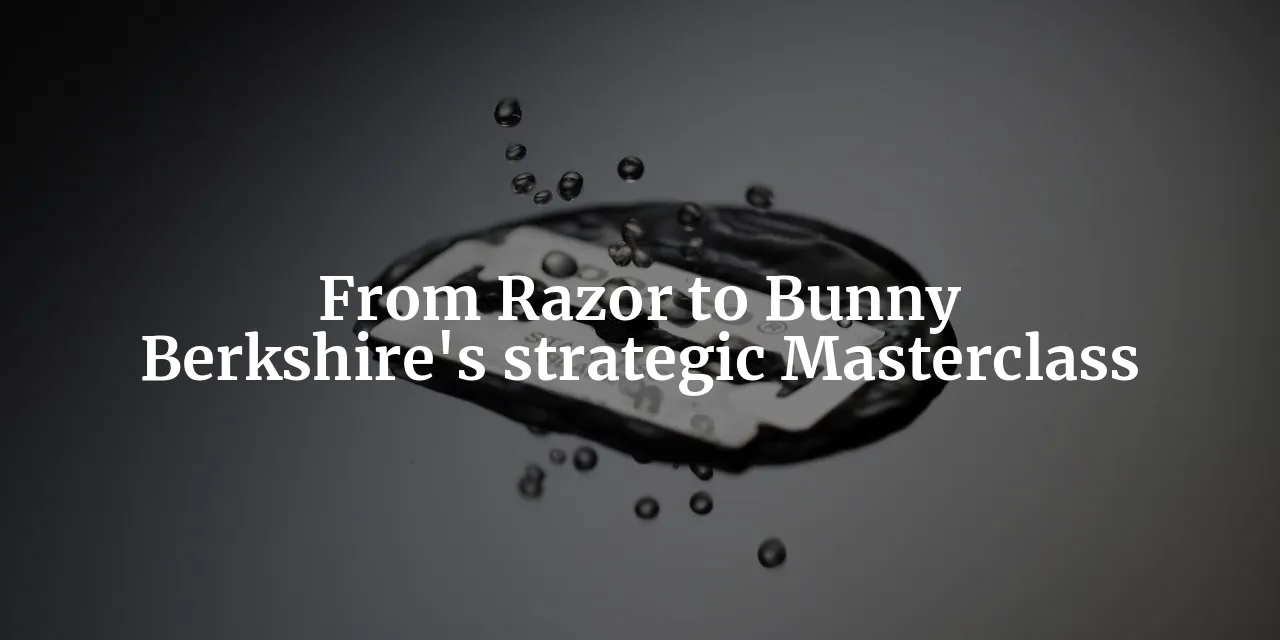
Conclusion
The journey from Gillette to Duracell encapsulates a remarkable narrative of strategic foresight and adaptability that has defined Warren Buffett's investment philosophy and guided Berkshire Hathaway to sustained success. This saga, beginning with a bold investment in Gillette's preferred stock in 1989, showcases how a calculated gamble evolved into a substantial stake in a leading battery manufacturer. The strategic maneuvers that followed, including the pivotal merger with Procter & Gamble and the eventual acquisition of Duracell, highlight Buffett's unparalleled ability to identify and capitalize on market opportunities.
Throughout this process, Buffett and his team demonstrated an acute understanding of market dynamics, consistently adapting to changing conditions while maintaining a focus on long-term value creation. The transformation of Berkshire's initial $600 million investment into a thriving Duracell asset, now contributing approximately $100 million in pre-tax annual earnings, serves as a testament to the effectiveness of this strategic vision. For shareholders, this journey reaffirms the importance of patience, insight, and the ability to navigate complex corporate landscapes.
The broader implications of this narrative extend beyond Berkshire Hathaway, offering valuable lessons for investors and business leaders alike. It underscores the significance of having a strategic vision that anticipates market shifts and leverages opportunities for growth. In a rapidly evolving business environment, the ability to pivot and adapt is crucial for sustaining competitive advantage. Buffett's approach exemplifies how understanding market trends and consumer behavior can yield substantial returns, reinforcing the notion that informed decision-making is key to investment success.
As we look forward, Duracell's prospects within Berkshire Hathaway's diverse portfolio appear promising. With its strong market position and ongoing commitment to innovation, Duracell is well-positioned to navigate the challenges posed by the rise of rechargeable devices and the demand for sustainable solutions. The company's focus on operational efficiency and product development will likely enhance its profitability and further solidify its role as a valuable asset in Berkshire's investment strategy.
The story of Berkshire Hathaway's evolution from Gillette to Duracell is not merely a historical account; it is a masterclass in strategic investment that offers enduring lessons for all stakeholders. By embracing the principles of adaptability, foresight, and a commitment to long-term value, investors can draw inspiration from Buffett's journey and apply these insights to their own endeavors. As we continue to witness the unfolding of this narrative, the future remains bright for both Duracell and Berkshire Hathaway, promising a legacy of growth and innovation for years to come.
References
-
Warren Buffett bet $600 million on Gillette - and ended up owning Duracell. Here's how his razor wager led to him buying the battery titan. - markets.businessinsider.com ↩↩↩↩↩↩↩↩↩↩
-
Buffett's Berkshire Hathaway buys P&G's Duracell - www.reuters.com ↩↩↩↩↩
-
Berkshire Hathaway annual reports (various) - www.berkshirehathaway.com ↩
-
Gillette - Wikipedia - en.wikipedia.org ↩
-
Duracell - Wikipedia - en.wikipedia.org ↩
-
Duracell CMO’s lessons for bringing low-interest brands into culture - www.marketingdive.com ↩
-
Alkaline Battery Market Analysis : US, China, Japan, UK, Germany - Size and Forecast 2024-2028 - www.technavio.com ↩↩↩↩
-
Unfortunately, we could not find further explicit numbers in the annual reports following 2017. However, the reports indicate slowly increasing revenue over the years which lead to our conclusion of around $100 million in pre-tax earnings at the time of writing. ↩
